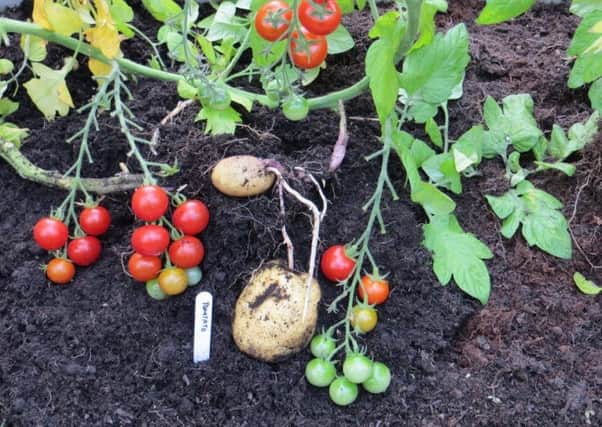The humble potato is hiding a sinister secret


Mention deadly nightshade (Atropa belladonna) to a group and the response is a look of awe, more so if the plant, covered in shiny black fruits, stands before them. This is a plant with attitude and a legendary list of previous convictions.
Its tempting fruits contain the poison atropine and ingesting a mere three of them can kill a child.
Advertisement
Hide AdAdvertisement
Hide AdIt follows that any other member of this plant group should be treated with caution, even when widely grown by gardeners as a main crop vegetable and deemed perfectly safe to eat. Under certain environmental conditions cellular structure can change dramatically.
A typical example is the humble potato (Solanum tuberosum), a gentle vegetable that we’ve all come to trust.
A key part of the cultivation process involves excluding daylight from the crop of tubers. This is achieved by a combination of planting deeply and covering the soil with a black plastic sheet, or more commonly, earthing-up soil as the haulms grow.
Developing tubers that protrude above soil level will eventually turn green, indicating that the poison solanine is present. An upset stomach is the least to expect should they go in the pan.
Advertisement
Hide AdAdvertisement
Hide AdI see so many tomato (Solanum lycopersicum) crops in greenhouses during summer visits and reflect that they, too, are related to deadly nightshade.
There’s little chance of poisoning because we wait until ripeness appears before they join sandwiches or salads. However, the family trait quickly emerges if a green fruit is ingested.
Mid to late May is soon enough to be introducing bought plants to an unheated greenhouse because cold nights turn the leaves blueish and growth is checked.
Confirmation of the close relationship between potato and tomato was long-ago demonstrated by the grafting of a stem from the latter onto a rootstock of the former. A partnership made in heaven you’d think, picking tomatoes all summer long, then digging up roots to harvest potatoes. But it never took-off commercially.
Advertisement
Hide AdAdvertisement
Hide AdTry it by growing both plants in separate small pots and binding two of same stem thickness together at a point where they’ve been cut.
Attempts to revive the idea have been made in recent years, but it remains a novelty.
It works with potato and aubergine too.